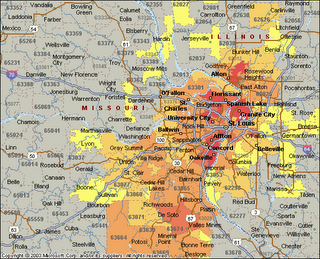OK. Here's something that should make you mad.
WHY ARE DRUGS SO EXPENSIVE? Answer: They're more expensive than you think.
If you asked someone on the street, they'd tell you it's because it takes pharmaceutical companies a long time--and a lot of money--to find a drug that treats a particular illness and is safe for use in humans. This is exactly the excuse pharmaceutical companies use too. When I started reading this article, I threw out a ballpark estimate percentage of the pharmaceutical research funding that was paid for by government dollars. I remember reading a few years ago in Parade magazine that 70% was PRIVATELY funded, so 30% came to mind right away. I said to myself, "maybe 50%." Then, not wanting to be overzealous, I backed off, coming to my final prediction of "25-50%".
I was way off.
OK, first of all think about what you pay in taxes. If the government says, "Because you spent this much on X thing, you don't have to pay taxes on that much of your income." That's a tax deduction. You pay tax on your income minus the amount you spent on X. That's NOT what pharmaceutical companies get. According to ?U.S.tax code, pharmaceutical companies get a tax CREDIT for their R&D expenditures. Thus, if they spend X dollars on R&D, at the end of the year they save X dollars in taxes. Now, pharmaceutical companies can claim tax credits for AT LEAST 50% of their R&D expenditures. This means that this tax rebate alone accounts for greater than or equal t0 50% of all the dollars spent on drug design studies, randomized clinical trials, etc. etc. Pharmaceutical companies are now paying for 50% or less of their "major" cost.
Second, the NIH. (NAtional Institutes of Health). The NIH funds well-designed studies that have anything remotely to do with physiology or medicine. Its budget is set by Congress and comes from the taxes that you and I pay. Research and development efforts undertaken by pharmaceutical companies are fundable by NIH dollars. Really fundable. ~10% of its annual budget fundable. The NIH budget fell off by ~$5 billion last year, but hopefully will rise to pre-2005 levels thanks to some good bipartisan legislation, back to ~$24 billion. So, each year that means that $2.4 billion IN ADDITION TO the tax credit finds its way from the federal government's coffers to the pockets of pharmaceutical companies.
So, the next time you're picking up the prescription at WalMart, look at the price tag. And add about 4 billion dollars. That's how much we're all really paying for drugs in the US.
--The source, for those who're interested...---
Within the medical/health industry, no sector receives better treatment under the tax code than the pharmaceutical industry. Federal tax credits include the Research and Experimentation Tax Credit, the Orphan Drug Tax Credit and the Possessions Tax Credit. A 1999 study conducted by the Congressional Research Service noted that between 1990 and 1996, just one tax credit alone saved drug companies $13 billion in federal taxes.
23 A tax credit, which is a dollar-for-dollar reduction on taxes, is substantially more lucrative than a tax deduction. The Research and Experimentation Tax Credit allows a pharmaceutical company to reduce its tax obligation on a dollar-for-dollar basis by claiming a tax credit equal to at least 50 percent of the R&D expended by the company during the year.
24 In other words, this tax credit alone publicly subsidizes 50 percent of all R&D research. Because of these tax credits, the pharmaceutical industry is the least taxed industry in the country.
25 Families USA sums up the industry’s tax situation as follows:
Because research-related tax credits are reported along with other tax credits as “general business tax credits,” there are no publicly available data showing the exact amount of tax relief that the industry receives for its investment in research. However, the effect of tax credits is clear. In 1999, the Congressional Research Service (CRS) studied industry taxation for the years 1990 to 1996. CRS found that the drug industry was taxed relatively lightly; total tax credits, many related to research investments, lowered the industry’s effective tax rate from 35.2 percent to 17.1 percent. Given the favorable tax treatment of R&D, it is unlikely that the industry would turn to R&D first for spending reductions.
26Given the fact that the pharmaceutical industry is the most profitable industry in the country, it is ironic that its 16 percent tax rate is lower than that imposed on middle class Americans, who generally pay tax rates between 30 percent and 40 percent, or the average American business, which generally pays a federal tax of approximately 27 percent.
27In addition to tax credits, the pharmaceutical industry receives additional public tax dollars from federal medical organizations such as the National Institutes of Health (“NIH”). In 1950, the NIH had a total appropriation of $43 million.
28 By 1998, the NIH received an appropriation of $13.6 billion.
29 Congress subsequently committed to double the budget of the NIH between 1998 and 2003.
30 By 2002, NIH’s budget was almost $24 billion.
31 The majority of NIH funding -- pproximately 80 percent -- is awarded to research centers and universities; ten percent of NIH funding is used for research conducted by the NIH itself.
32 At least one study of the 21 most important drugs introduced between 1965 and 1992 concluded that publicly funded research played a significant role in the development of 14 of the drugs.
33 The NIH examined the top five selling drugs in 1995, each of which had over $1 billion in sales, and concluded that taxpayer funded researchers conducted 55 percent of the published research projects on these drugs.
34 It also concluded that federal taxes also paid for approximately 30 percent of the published research of foreign academic institutions which participated in the development of these drugs.
35


